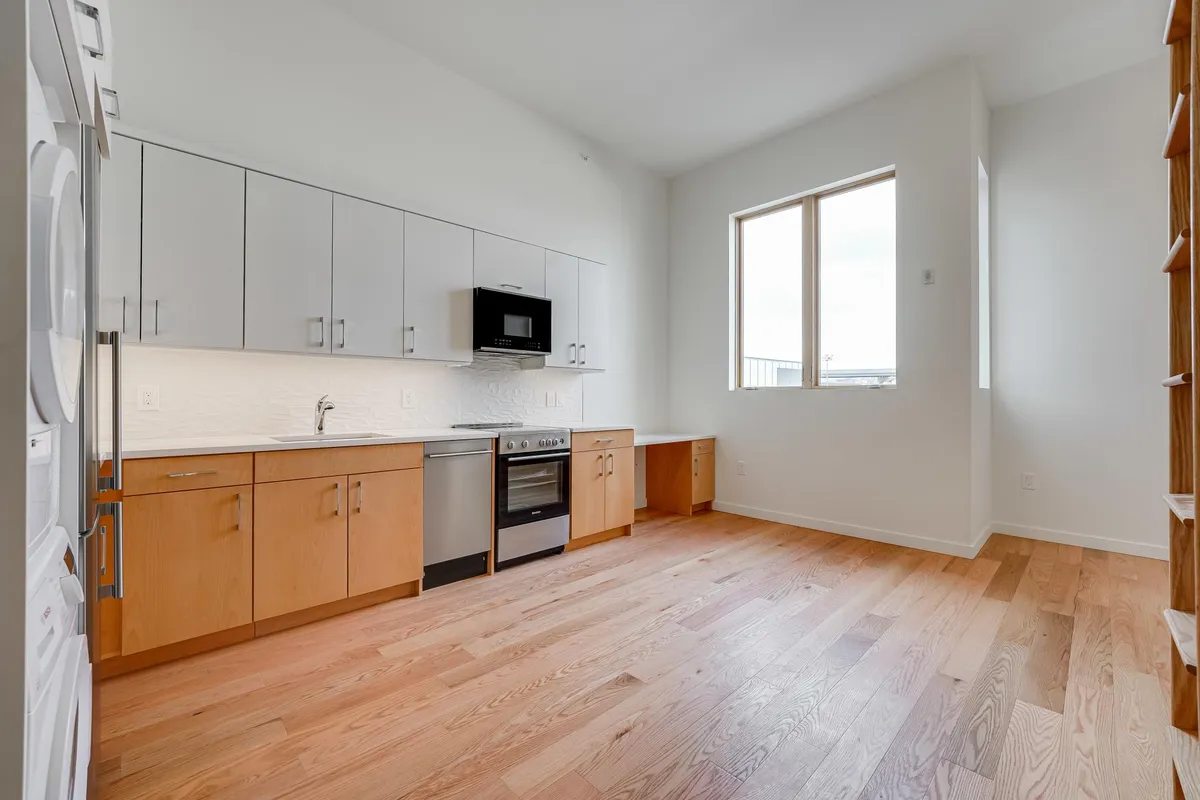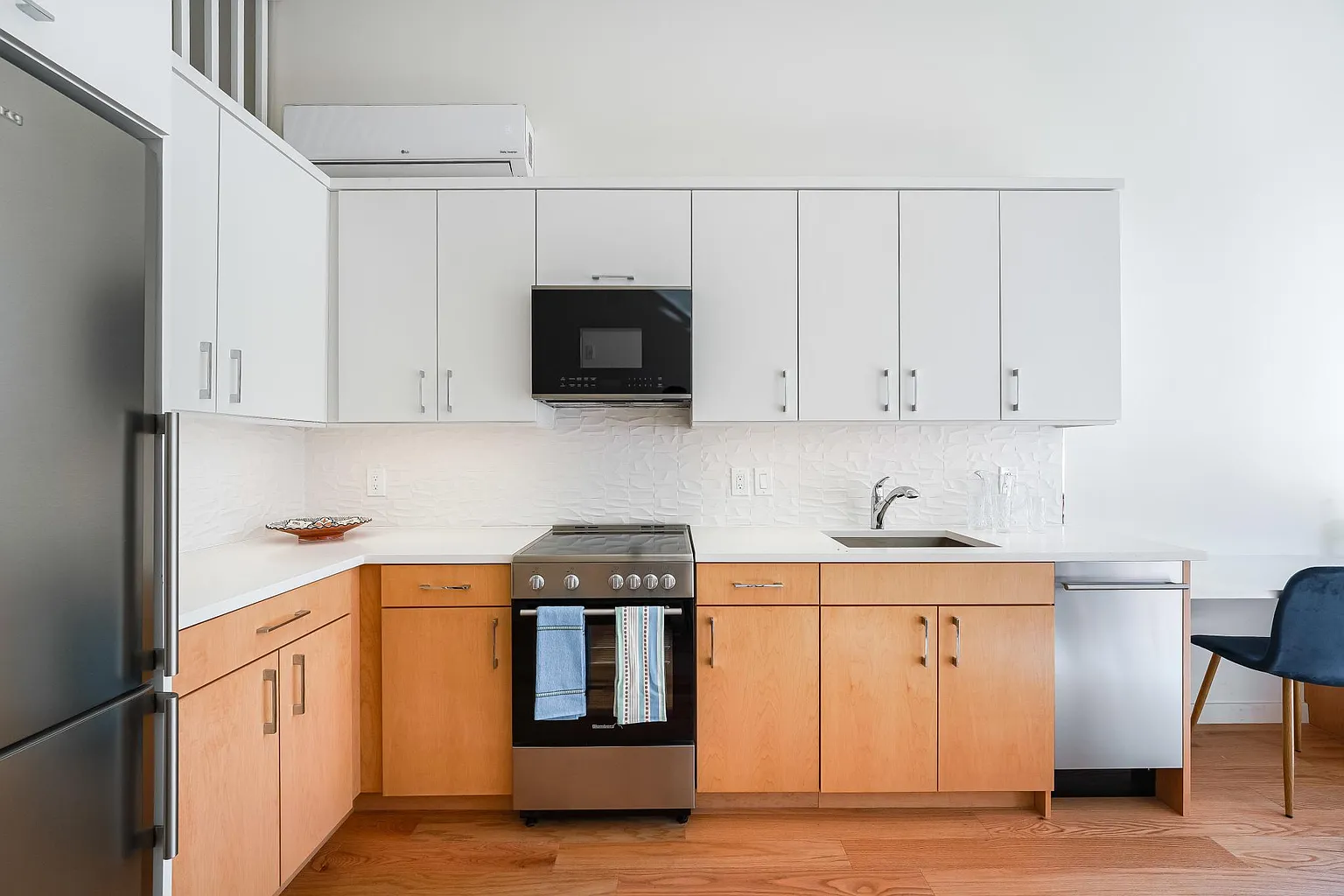
Kitchen Remodeling: Definition, Types, Process, Benefits, Permits and Regulations
Kitchen remodeling enhances property value, improves functionality, and modernizes outdated kitchens, making it a preferred choice for homeowners seeking upgrades.
According to a report by the National Association of Realtors (NAR), 2022, titled “Remodeling Impact Report,” homeowners who invest in kitchen remodeling recover approximately 75% of the cost upon house resale.
The types of kitchen remodeling include cosmetic, layout modification, full, energy-efficient, and smart kitchen remodeling. Cosmetic remodeling focuses on surface-level updates, while layout modifications adjust the kitchen’s floor plan. Full remodeling involves complete overhauls, while energy-efficient remodeling integrates sustainable materials. Smart kitchen remodeling incorporates automation for convenience.
The kitchen remodeling process includes planning, budgeting, design, hiring contractors, demolition, structural modifications, installation, and inspection. Proper planning ensures budget control and compliance with safety codes.
The benefits of kitchen remodeling include increased home value, better energy efficiency, improved aesthetics, optimized storage, and enhanced safety. Modern upgrades reduce energy consumption and improve the kitchen’s overall usability.
According to a study by the Environmental Protection Agency (EPA) et al., titled “Energy-Efficient Home Upgrades,” published in EPA Reports (2021), upgrading to ENERGY STAR-rated appliances during a kitchen remodel reduces energy consumption by 15%.
Permits and regulations for kitchen remodeling ensure compliance with local building codes. Structural changes, electrical upgrades, and plumbing modifications require permits to maintain safety and legal compliance. Failure to obtain proper licenses results in fines and project delays.
A report by the U.S. Department of Housing and Urban Development (HUD), 2022, titled “Home Improvement Permits and Regulations,” found that failing to obtain permits results in fines of up to $5,000 and complications during home sales.
What Is Kitchen Remodeling?
Kitchen remodeling is the process of altering a kitchen’s structure, layout, and components to enhance functionality, efficiency, and aesthetics. The primary objectives of kitchen remodeling focus on improving usability, energy efficiency, and property value.
A well-designed remodel enhances functionality by optimizing layout and storage, reducing clutter, and improving workflow. Energy-efficient upgrades, including new insulation, LED lighting, and modern appliances, contribute to long-term savings.
According to a study by Kim et al., titled “Current Status of Old Housing for Low-Income Elderly Households in Seoul and Green Remodeling Support Plan,” published in Buildings (2022), green remodeling reduces household energy use by 20%. Additionally, a kitchen remodel significantly impacts resale value.
Kitchen remodeling differs from kitchen renovation in its scope and complexity. Remodeling involves structural changes, such as modifying the floor plan or installing new electrical and plumbing systems. Renovation, however, focuses on restoring and upgrading existing elements without altering the layout.
What Are Types Of Kitchen Remodeling?

The types of kitchen remodeling are cosmetic kitchen remodeling, layout modification remodeling, full kitchen remodeling, energy-efficient kitchen remodeling, and smart kitchen remodeling. They are classified based on their scope, cost, and impact on functionality.
According to a study by Kim et al., titled “Current Status of Old Housing for Low-Income Elderly Households in Seoul and Green Remodeling Support Plan,” published in Buildings (2022), comprehensive remodeling enhances energy efficiency. It improves the overall livability of a home.
Remodeling ranges from minor cosmetic upgrades to complete structural overhauls. Selecting the right type depends on budget, goals, and the extent of changes required.
1. Cosmetic Kitchen Remodeling
This involves surface-level updates that improve aesthetics without major structural changes. This includes painting walls, updating backsplashes, replacing cabinet doors, and installing new light fixtures. It is the most cost-effective option, making it ideal for homeowners looking to refresh their kitchen’s appearance without extensive renovation. According to a study by Simona D’Oca et al., titled “Technical, Financial, and Social Barriers in Deep Building Renovation,” published in Buildings (2018), simple cosmetic upgrades enhance indoor aesthetics and comfort while maintaining cost efficiency.
2. Layout Modification Remodeling
This remodeling focuses on changing the kitchen’s spatial arrangement to improve workflow and accessibility. This involves expanding or downsizing the kitchen, relocating major appliances, or removing walls to create an open-concept space. Homeowners choose this option to enhance movement efficiency and create a more inviting cooking area. This type of remodel requires careful planning to ensure structural integrity and compliance with building codes.
3. Full Kitchen Remodeling
This complete overhaul involves redesigning every aspect of the kitchen, including layout, cabinetry, flooring, and countertops. It typically includes major structural, electrical, and plumbing modifications. This option is suitable for outdated kitchens requiring modern functionality and aesthetic transformation.
4. Energy-Efficient Kitchen Remodeling
This integrates eco-friendly appliances, insulation, and lighting to reduce power consumption and environmental impact. It often includes LED lighting, smart thermostats, energy-efficient windows, and sustainable materials like bamboo or recycled countertops. Homeowners opting for this remodel prioritize long-term cost savings and sustainability, making their kitchen eco-conscious and economically efficient.
5. Smart Kitchen Remodeling
Smart kitchen remodeling incorporates technology-driven appliances and automation systems to enhance convenience and functionality. Features like voice-activated lighting, app-controlled appliances, and touchless faucets are integrated to create a high-tech kitchen experience. According to a study by Richard A. Daynard, titled “Redress by a Licensing Authority: Settling Home Improvement Disputes in New York City,” published in the Journal of Dispute Resolution (1985), automation in home remodeling has improved operational efficiency and user control, making smart kitchens a modern and practical investment.
What Are The Benefits Of Kitchen Remodeling?

The benefits of kitchen remodeling are increased home value, improved functionality, better energy efficiency, enhanced aesthetics, and improved safety and sustainability. Homeowners invest in remodeling projects to upgrade their kitchens into more efficient, visually appealing, practical spaces.
A 2023 study by the National Association of Home Builders (NAHB), titled “The Impact of Kitchen Remodeling on Home Value,” revealed that homes with updated kitchens sell 30% faster than those without, and sellers recoup 72% of the remodeling costs.
1. Increased Property Value
Kitchen remodeling significantly enhances a home’s resale value. A modernized kitchen attracts potential buyers and increases market competitiveness. Upgraded appliances, new cabinetry, and improved layouts make the house more appealing, leading to a higher selling price.
2. Improved Functionality and Efficiency
Optimized storage solutions, better workflow, and updated layouts contribute to a more functional kitchen. Adjustments like adding more counter space, installing pull-out pantry shelves, and reorganizing appliance placement improve cooking efficiency and convenience.
3. Better Energy Efficiency
Energy-efficient upgrades reduce power consumption and lower utility costs. Installing LED lighting, ENERGY STAR-rated appliances, and better insulation contributes to long-term savings.
4. Enhanced Aesthetics
Remodeling allows homeowners to customize their kitchens according to style preferences. Sleek finishes, modern countertops, and contemporary designs create a visually appealing space that matches lifestyle needs.
5. Improved Safety and Sustainability
Remodeling replaces outdated wiring, improves ventilation, and integrates eco-friendly materials. Using non-toxic paints and sustainable materials reduces health hazards and enhances environmental responsibility.
What Are The Processes Involved In Kitchen Remodeling?
The processes involved in kitchen remodeling include planning, designing, demolition, installation, and final inspection. Each stage ensures the remodel meets functional, aesthetic, and safety requirements.
A 2022 survey by Angi (formerly Angie’s List), titled “Kitchen Remodeling Process Breakdown,” found that 60% of homeowners spend 2-3 months planning their kitchen remodel, with 70% hiring professionals for plumbing and electrical work tasks.
1. Planning and Budgeting
Setting remodeling goals and defining priorities streamline the project. Estimating costs and creating a budget prevent overspending and ensure financial control.
2. Designing the New Kitchen
Choosing the right kitchen layout optimizes space and enhances functionality. Selecting high-quality materials, finishes, and appliances ensures durability and a cohesive design.
3. Hiring Contractors vs. DIY Remodeling
Hiring professionals guarantees high-quality workmanship and compliance with building codes. DIY remodeling is an option for minor updates, but complex renovations require expertise.
4. Demolition and Preparation
Removing old cabinets, countertops, and flooring clears the space for new installations. Safety precautions, such as disconnecting plumbing and electrical connections, reduce risks.
5. Structural, Electrical, and Plumbing Work
Updating wiring, plumbing, and ventilation ensures efficiency and safety. Old electrical systems are replaced to handle modern appliances and prevent fire hazards. Plumbing upgrades improve water flow and prevent leaks, while proper ventilation reduces moisture buildup, minimizing mold and air quality issues.
6. Installations
Strategically installing cabinets, countertops, and appliances maximizes usability and storage. Meanwhile, choosing durable materials enhances longevity.
7. Flooring and Painting
Popular kitchen flooring options include tiles, hardwood, and vinyl. Selecting appropriate paint colors enhances ambiance and complements the kitchen’s overall design.
8. Final Touches and Inspection
Adding décor, lighting, and finishing details completes the transformation. A final inspection ensures all components function correctly before the project is considered complete.
What Are The Tips For A Successful Kitchen Remodel?
The tips for a successful kitchen remodel include setting a realistic budget, prioritizing functionality, selecting durable materials, maintaining clear communication, and planning temporary kitchen arrangements. A well-planned budget prevents financial strain, while a contingency fund covers unexpected expenses.
Prioritizing functionality ensures the kitchen remains efficient beyond current design trends. Choosing durable and timeless materials extends longevity and reduces maintenance costs. Clear communication with contractors and designers minimizes errors and delays.
Planning for a temporary kitchen setup ensures daily meal preparation remains convenient during renovations. Proper preparation enhances the remodeling experience and leads to a more satisfactory outcome.
What Factors Influence The Cost Of A Kitchen Remodel?
The factors that influence the cost of a kitchen remodel include materials, labor, permits, and unforeseen adjustments. Each of these elements determines the overall budget and scope of the renovation.
According to a 2023 report by HomeAdvisor, titled “Kitchen Remodeling Cost Guide,” a minor kitchen remodel costs $15,000, while a major remodel costs up to $75,000, depending on materials and labor.
1. Materials
The type and quality of materials significantly impact costs. Premium choices such as custom cabinetry, granite countertops, and hardwood flooring increase expenses, while budget-friendly options like laminate surfaces and prefabricated cabinets help reduce costs.
2. Labor
Skilled professionals, including contractors, electricians, and plumbers, contribute to overall costs. More complex remodeling projects that require custom installations and structural modifications increase labor fees.
3. Permits
Structural changes, electrical work, and plumbing modifications often require permits, adding to the overall cost. Permit fees vary based on local regulations and the work’s extent.
4. Unforeseen Adjustments
Unexpected issues such as plumbing leaks, outdated wiring, or structural weaknesses may require additional repairs. These unforeseen adjustments add costs and should be accounted for in a contingency budget.
What Are The Kitchen Remodeling Permits And Regulations?
The kitchen remodeling permits and regulations include building permits, electrical permits, plumbing permits, and compliance with local codes. These requirements ensure safety, structural integrity, and adherence to legal standards.
1. Building Permits
Major renovations involving structural changes, such as wall removal, extensions, or layout modifications, require building permits. These permits verify that the remodel meets zoning laws and construction codes.
2. Electrical Permits
Updating wiring, installing new outlets, or modifying the kitchen’s electrical system requires an electrical permit. This ensures the work follows safety guidelines and prevents fire hazards.
3. Plumbing Permits
Relocating sinks, installing dishwashers, or significantly changing water lines necessitates plumbing permits. Proper plumbing work prevents leaks and ensures reliable water flow.
4. Compliance with Local Codes
Ensuring the remodel meets fire safety, ventilation, and structural stability requirements is essential. According to a report by the National Association of Home Builders, titled “The Remodeling Market in Transition” (2020), failure to obtain necessary permits leads to fines, delays, or complications when selling a property.


